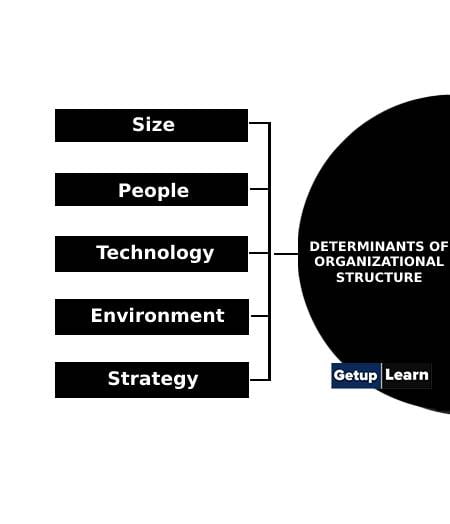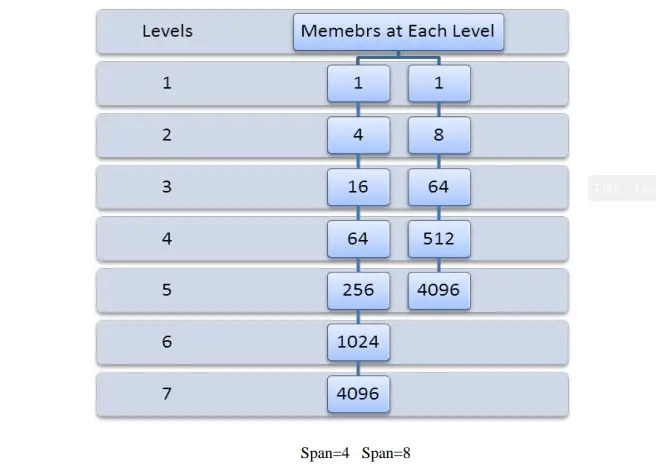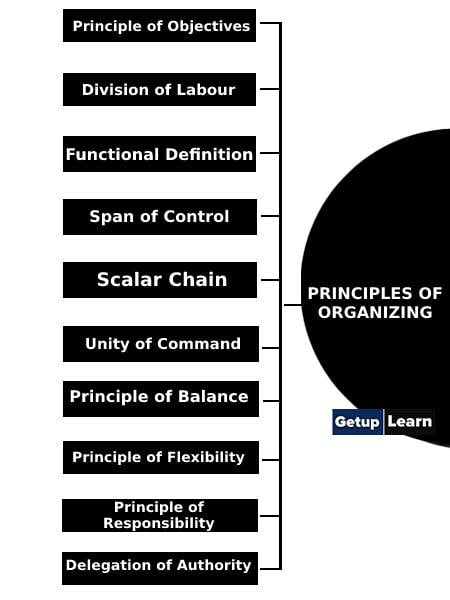Table of Contents
What is Organizational Structure?
An organizational structure shows the authority and responsibility relationships between the various positions in the organization by showing who reports to whom. Organization involves establishing an appropriate structure for goal-seeking activities.
It is an established pattern of relationships among the components of the organization. March and Simon have stated that-“Organisation structure consists simply of those aspects of the pattern of behavior in the organization that is relatively stable and change only slowly.
The organization is generally shown on an organizational chart. It shows authority and responsibility while designing the relationships between variables in organizations. Organization structure, due attention should be given to the principles of organization.
Importance of Organisational Structure
The following are the importance of organizational structure:
- A properly designed organization can help improve teamwork and productivity by providing a framework within which people can work together most effectively.
- Organizational structure determines the location of decision-making in the organization.
- Sound organization structure stimulates creative thinking and initiative among organizational members by providing well-defined patterns of authority.
- A sound organizational structure facilitates the growth of an enterprise by increasing its capacity to handle an increased level of authority.
- Organizational structure provides a pattern of communication and coordination. 6. The organization structure helps a member to know what his role is and how it relates to other roles.
Determinants of Organizational Structure
There are many crucial factors that determine the type of structure an organization can have and should have. The following factors are important and determine the structure of any organization, type, and level of structure.
Let’s discuss the determinants of organizational structure:

Size
The size of the organization is important in determining its structure. If the size of the organization is small then, it can have a simple structure with few activities.
For example, a shopkeeper does not need a full organization structure rather simply owner and worker(s) make a two-stage structure with a simple hierarchy. As the number of people in organization increases, the division of labor/tasks to have supervision of all those activities performed by different people at different places/departments.
Hence, there emerges a need for a structure to define who will report to whom, and who comes under whom. Therefore, size definitely plays an important role in the determination of organizational structure.
People
It is not only the number of people but also the types of people that determine the organizational structure. For example, a financial organization’s stricture will be entirely different than a technical organization’s structure.
More technical activities need more technical people directly linked to the main business thus the structure will change. The span of control is also varying in technical jobs as compared to non-technical jobs. Therefore, people are also a deciding factor in structure.
Technology
The way product or services are produced affect the organization’s structure. Information technology has changed almost all businesses in a substantial manner. The use of the latest technology brings speed with more risk appetite in business, thus, making scope for more strategic planning.
The increased complexity of the system enforces the re-alignment of positions, authority, and hierarchy. Hence, technology does have important in designing the structure of any organization.
Environment
The social, legal, political, and economic environment definitely affects the structure. It is said that the change in the operating environment decides the organization’s structure.
It means if the customer preferences, pollution parameters, legal framework, and economic conditions change, likewise, organization sub-systems are required to increase or decrease the positions, technology, and people.
Hence, organizations must have a change in absorption capacity. The fixed jobs and system may not be in a position to respond the environmental change. Hence flexibility in structure is always advisable to accommodate any change if needed.
Strategy
Strategy means the specialized tools to achieve the goals. This includes the meticulous determination of the goals and allocation of the resource to them in the best possible manner. Redefining the structure of Mahindra & Mahindra reflects the change in the strategy of the organization.
Merely a change in logo gives a message of strategic change to accommodate the business changes. If an organization faces tough competition in a stronghold then the company can change the strategy to focus on small customers and areas which leads to a divisional change in structure. Hence the strategy is an important determinant of structure.
Components of Organizational Structure
The term organizational structure describes the established framework of the organization. This framework explains the system of communication, hierarchy, and authority.
It is as simple to understand as a physical structure having different parts of the body which can be said as tall or flat. These are the components of organizational structure:

Complexity
Complexity means the degree of differentiation an organization is having in its structure. The more number of activities, the more people and more positions refers to increased difficulty in coordinating between geographically dispersed activities. This will increase the horizontal as well as vertical complexity.
Formalization
The more standard and formal system, the more effective and efficient it would be in establishing the relationship between the positions.
The degree to which an organization depends on formal rules and regulations to manage resources is called formalization. The more formal system demands a more formal structure.
Centralization
centralization means the decision-making power lies at what point or position. In the case of small and new organizations, the owner can take risk of delegating powers to the manager.
Hence all the decisions are usually taken by one person. This is a perfect centralized system. As the organization grows, it becomes difficult to keep all the decision-making powers concentrated at one point.
Hence decentralization of authority is required by delegating the authority to lower levels so that they can take decisions to make the system efficient.
Dimensions of Organizational Structure
To build the structure of any organization, there is a need to follow certain principles. Usually, the structure needs horizontal and vertical specifications to build the horizontal and vertical structure.
The horizontal dimension needs to understand the type of work, division of work, and grouping of similar tasks. The vertical structure depends on authority, position, hierarchy level, a span of control, and decentralization policy. These are, although, interdependent but need to be taken care of in entirely different aspects.
The following are the two type of dimensions of organizational structure:

Horizontal Dimensions
Deciding about the horizontal length of an organization relies on mainly the division of labor into small jobs and how perfectly the clubbing of similar activities takes place.
The division of labor and departmentalization is the main two dimensions responsible for the horizontal arm of the structure discussed as follows:
Division of labor
The division of labor means the job is broken into several parts based on the labor required to perform. It is done to get each part of the job performed by a specialized person rather than the whole job is done by one individual.
Each part of the job is performed in a sequence and the final step makes the job finally done. With the division of labor, the organization can utilize the diversified skills and capabilities of employees.
Departmentalization
The division of the job into several parts needs to be analyzed in order to make supervision effective. Similar parts of the job are clubbed into one group called Department. The process is called Departmentalisation. Departmentalization is also helpful in utilizing the specialist and making proper coordination.
One of the common ways of departmentalization is based on functions performed, for example, the human resource department, marketing department, production department, and finance department. It may also be based on product, market, process, geography, etc.

Vertical Dimensions
In every organization, top-level managers, middle managers, or front-line managers are common hierarchy positions. What are the criteria to determine these positions, their hierarchy, and the level of authority they possess?
How many people a supervisor can supervise effectively? These questions are concerned with the vertical dimensions which are important to make the vertical structure of any organization.
Unity of Command
The dimension was first described by Henry Fayol in his fourteen principles of administrative theory. This principle simply refers to the one commander system which means every employee should have one and only one superior or boss to whom he or she will report and seeks instructions.
In case a person is attached to more than one activity falling under different departments having different heads, then the activities and timing must be specified in order to avoid any possibility of interest clashes or misuse of resources. In practice, it is not possible in black & white, as the informal instructions are commonly given by others than the boss or superior.
Authority and Responsibility
Authority is the power to take decisions regarding the job or process. It empowers a manager to issue orders and enforces employees to follow them. Therefore, this aspect is important for managers to decide the level of authority and responsibility employees need to perform on the job.
The authority is delegated to the subordinates some rights with some riders so that they can take decisions as and when the job requires. Authority always accompanies certain responsibilities with it. If the authority is used for the wrong and irrelevant cause, the responsibility will be of the person, who is being delegated the authority.
Span of Control
The span of control means how many subordinates a manager can supervise at a time effectively. If the manager can supervise more people, then the structure would be flat and if the manager supervises fewer people, it makes the structure tall.
If an organization is having 100 people, then the structure would be as depicted in the figure:

The figure elaborates very clearly that if the span is reduced from 8 to 4, it may change the vertical levels from 7 to 5 with managerial positions reduced drastically from 1365 to 585.
Centralization and Decentralization
As discussed in authority and responsibility, the authority needs to be delegated to the subordinates in order to get work done on time. The amount of authority is important to determine in order to maintain control over the business.
It is like balancing the balance which means if the organization is more decentralized, it may shift the risk of the power center losing control over the business, and if more centralized, it may delay decision-making and lose the business.
Hence balancing between more and less is the main issue in this dimension. The structure is definitely affected by more power centers (authoritative positions) in case of decentralization leading to a taller structure. Centralization leads to a flat structure.
Principles of Organization
The organization is a structure with people occupying positions with authority to work for the achievement of organizational objectives. In order to develop an effective organizational structure, certain guidelines are necessary to tag along into the system.
E. F. L. Brech defined, “If there is to be a systematic approach to the formulation of organization structure, there ought to be a body of accepted principles”. These are the principles of organization:
- Objectives
- Specialization
- Span of Control
- Scalar Chain
- Unity of Command
- Unity of Direction
- Delegation of Authority and Responsibility
- Efficiency
- Simplicity
- Flexibility
- Acceptability

Objectives
The objectives of the enterprise and the organization structure are closely related and dependent on each other.
Hence, the objectives of the enterprise should be clearly defined first and then the process of accelerating the resources of the organization should be started for the achievement of these objectives.
Specialization
Effective organizations need every job to be performed in the best manner. This leads to promoting specialization i.e. every job should be performed by an expert person. Therefore, the activities of the enterprises should be divided into small jobs and assigned to persons according to their specialization.
Span of Control
The span of control means the span of a number of employees under one supervisor. Hence, the span of control brings effectiveness to the job, which is the foremost requirement.
Therefore the span of control must be kept low in order to bring effectiveness to the organization. A supervisor should be asked to supervise a reasonable number of subordinates.
Read More Principles of Organization
What is the definition of organizational structure?
Organizational structure refers to the organizational framework which reflects the different positions, authority, and hierarchy in relation to each other. It also indicates an order or sequence of organization systems with different sub-systems based on certain parameters like functions, territory, products, etc.
What are the determinants of organizational structure?
The following are the determinants of organizational structure:
1. Size
2. People
3. Technology
4. Environment
5. Strategy.
What are the components of organizational structure?
The following are the components of organizational structure:
1. Complexity
2. Formalization
3. Centralization.
What are the 11 principles of organization?
Following are the 11 principles of organization:
1. Objectives
2. Specialization
3. Span of Control
4. Scalar Chain
5. Unity of Command
6. Unity of Direction
7. Delegation of Authority and Responsibility
8. Efficiency
9. Simplicity
10. Flexibility
11. Acceptability.
What are the dimensions of organizational structure?
The following are the base dimensions of organizational structure:
1. Horizontal Dimensions: Division of labor, Departmentalization.
2. Vertical Dimensions: Unity of Command, Authority, and Responsibility, Span of Control, Centralization, and Decentralization.














